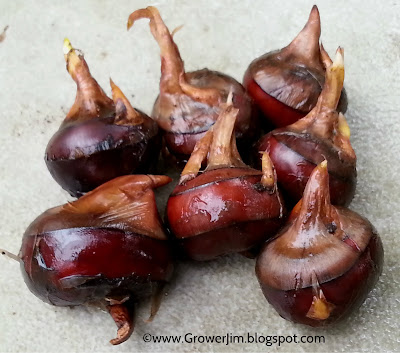Molokhia is a highly nutritious ancient super-green from the Middle-East. It's also known as Egyptian spinach, jute mallow or Jew's mallow. Botanically, it's Corchorus olitorius. The leaves can be eaten raw or cooked; use them fresh in salads, cooked as a side vegetable, or made into soup. The cooked leaves are mucilaginous, and dried leaves can be used as a thickener in soups or brewed as a tea.
The nutritious leaves are high in vitamins A, C, E, K, potassium, calcium and magnesium, and also contain beta carotene, iron, and more than 32 vitamins, minerals and trace elements. It’s said to aid digestion, improve vision, lower stress, and increase libido among other health benefits. The leaves also contain 6 different anti-oxidants.
Seed should be sown in spring when the soil is warm. Plants grow quickly and are ready for a first cutting in about 60-70 days.
Harvest by cutting the upper 6-8 inches of growth. The tender stems from this region are also edible if finely cut up along with the leaves. Repeat cuttings can be made from each flush of new growth until you run out of summer. Alternatively, you can sow seeds in succession and harvest the entire young plant at once.
Plants have a strongly upright growth habit, but each successive harvest of the newer growth forces more branching. Individual leaves are 2-3 inches in length. If left uncut, molokhia can reach 6 feet tall.
In fall, as the days shorten, the plant ceases leafy growth and starts to flower. For this reason, molokhia is not a good choice for a fall garden where temperatures permit; the plant just wants to bloom and you'll get nothing leafy to harvest.
The flowers are bright yellow and emerge from the leaf axils.
Soon after blooming the seedpods start to develop. They grow to about the same length as the leaves.
The plant declines as the seedpods reach maturity and dry to a tan or black color.
The pods are a 5-sectioned capsule filled with many angular, greenish-tinted seeds.
The stems of the plant are the source of jute fiber, and that is its primary reason for cultivation in India.
Although Corchorus olitorius likely originated in Africa, it is now pan-tropical and in some countries it is considered a weed (perhaps testament to its ease of cultivation). As a garden vegetable it can be successfully cropped anywhere the growing season exceeds 70 days.
Buy Molokhia seeds







































































































